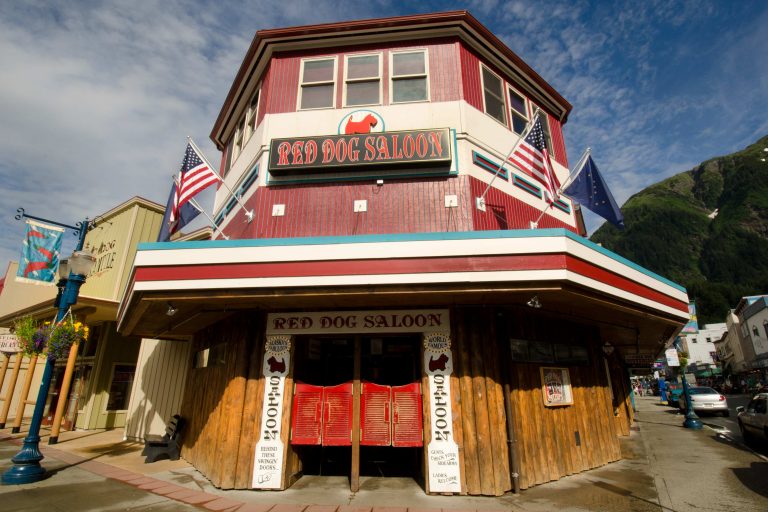This all started when my Mom and Sister said they wanted to go on a cruise to Alaska to watch whales, tour Misty Fjords and see icebergs calving from Glaciers. Being a well-travelled sailor, this held little interest for me ... but, being a fan of the cable television show 'Gold Rush', I decided to direct my excursion inland to the Yukon Territory instead.
Ever since I saw the movie 'Total Recall', when the sales guy tells Arnie; "everyone always goes on vacations as themselves .. why not go as somebody else?", I've wanted to try that. So, rather than go on the cruise as just another tourist, I thought it might be fun to travel in the persona of a 19th century Adventurer / Explorer mounting an expedition to the Klondike gold fields in the late 1890's.
Quick History Lesson
The Gold Rush was a migration by an estimated 100,000 prospectors to the Klondike region of the Yukon in north-western Canada between 1897 and 1900. The Hudson's Bay Company had explored the Yukon in the first half of the 19th century, but ignored rumors of gold in favor of fur trading, which offered more immediate profits. Early American prospectors, with help from the indigenous Tlingit and Tagish tribes of the north-west, opened the important routes of Chilkoot and White Pass trails and reached the Yukon valley between 1870 and 1880.
In 1883, Ed Schieffelin identified a considerable amount of gold deposits along the Yukon River and the same year gold had been found on the banks of the Klondike River, but in small amounts and no claims were made. By the late 1880s, several hundred miners were working their way along the Yukon valley. On August 16, 1896, American prospector George Carmack found gold on Bonanza Creek, one of the Klondike's tributaries and by the end of August, all of Bonanza Creek had been claimed by miners. Just before Christmas, word of the gold reached Circle City and despite the winter, many prospectors immediately left for the Yukon by dog-sled, eager to reach the region before the best claims were taken.
The outside world was still largely unaware of the news and because the winter prevented river traffic, it was not until June 1897 that the first boats left the area, carrying the freshly mined gold and the full story of the discoveries. The 'stampede' actually began on July 15, 1897, in San Francisco when the first of the early prospectors returned from the Klondike, bringing with them large amounts of gold on the ships 'Excelsior' and 'Portland' with the press reporting a total of $1,139,000 ($1 billion in 2010) brought in by these ships, which proved to be an underestimate. To reach the gold fields, most took the route through the ports of Dyea and Skagway in Southeast Alaska. Here, the Klondikers could follow either the Chilkoot or the White Pass trails to the Yukon River and sail down to the Klondike.
And so, it begins ...

Ever since I saw the movie 'Total Recall', when the sales guy tells Arnie; "everyone always goes on vacations as themselves .. why not go as somebody else?", I've wanted to try that. So, rather than go on the cruise as just another tourist, I thought it might be fun to travel in the persona of a 19th century Adventurer / Explorer mounting an expedition to the Klondike gold fields in the late 1890's.
Quick History Lesson
The Gold Rush was a migration by an estimated 100,000 prospectors to the Klondike region of the Yukon in north-western Canada between 1897 and 1900. The Hudson's Bay Company had explored the Yukon in the first half of the 19th century, but ignored rumors of gold in favor of fur trading, which offered more immediate profits. Early American prospectors, with help from the indigenous Tlingit and Tagish tribes of the north-west, opened the important routes of Chilkoot and White Pass trails and reached the Yukon valley between 1870 and 1880.
In 1883, Ed Schieffelin identified a considerable amount of gold deposits along the Yukon River and the same year gold had been found on the banks of the Klondike River, but in small amounts and no claims were made. By the late 1880s, several hundred miners were working their way along the Yukon valley. On August 16, 1896, American prospector George Carmack found gold on Bonanza Creek, one of the Klondike's tributaries and by the end of August, all of Bonanza Creek had been claimed by miners. Just before Christmas, word of the gold reached Circle City and despite the winter, many prospectors immediately left for the Yukon by dog-sled, eager to reach the region before the best claims were taken.
The outside world was still largely unaware of the news and because the winter prevented river traffic, it was not until June 1897 that the first boats left the area, carrying the freshly mined gold and the full story of the discoveries. The 'stampede' actually began on July 15, 1897, in San Francisco when the first of the early prospectors returned from the Klondike, bringing with them large amounts of gold on the ships 'Excelsior' and 'Portland' with the press reporting a total of $1,139,000 ($1 billion in 2010) brought in by these ships, which proved to be an underestimate. To reach the gold fields, most took the route through the ports of Dyea and Skagway in Southeast Alaska. Here, the Klondikers could follow either the Chilkoot or the White Pass trails to the Yukon River and sail down to the Klondike.
And so, it begins ...






Comment